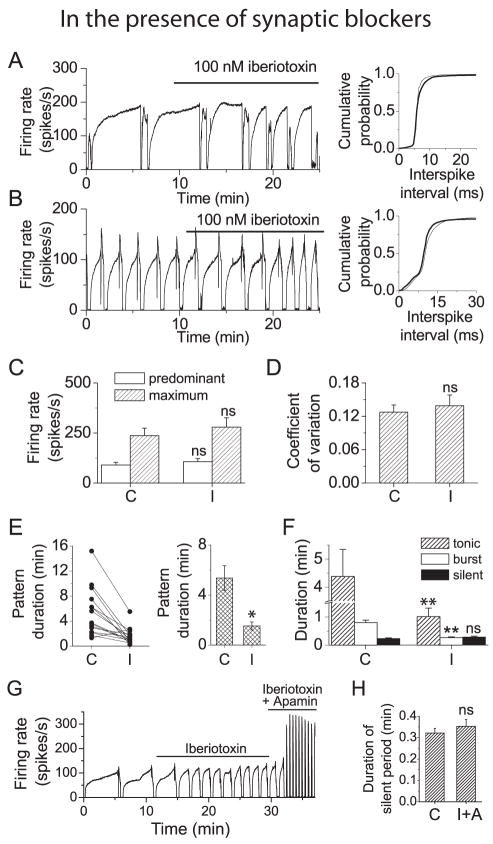Figure 3. In Purkinje neurons with the trimodal pattern of activity block of BK channels shortens the pattern period but does not increase the average firing rate.
A, Left panel: Average firing rate vs. time from a Purkinje neuron with the trimodal pattern of activity. Superfusion with iberiotoxin decreased the single cycle duration of the pattern period but did not increase the average firing rate. Right panel: Cumulative probability distributions of interspike intervals in the presence of iberiotoxin (thick traces) and in control conditions (thin traces) show that there was no change in firing rate in iberiotoxin. B, Left panel: Average firing rate vs. time from another Purkinje neuron with the trimodal pattern. Right panel: Cumulative probability distributions of interspike intervals. C, Histogram showing average predominant and maximum firing rates for all Purkinje neurons with the trimodal pattern. The mean value of the predominant firing rate was 90 (± 14) spikes/s in control conditions (C) and 107 (± 15) spikes/s in iberiotoxin (I). Maximum firing rates were 237 (± 37) spikes/s in control conditions, and 279 (± 47) spikes/s in iberiotoxin, respectively. Error bars are ± S.E.M., n=15. ns, values were not significantly different from control. D, The coefficient of variation was determined for a 5 s interval where there was no increase in the average firing rate during the tonic phase of firing for each neuron. Block of BK channels did not change the coefficient of variation. mean values were o.13 (± 0.01) in control conditions and 0.14 (± 0.02) in iberiotoxin. ns, values were not significantly different from control. E, Left panel: The average single cycle duration for each cell tested under control conditions (C) and in the presence of iberiotoxin (I). Right panel: Average single cycle duration for all cells tested. The mean pattern duration was 5.36 (± 1.0) min under control conditions and 1.53 (± 0.3) min in iberiotoxin. Error bars are ± S.E.M (n = 15). Values in iberiotoxin were significantly different from control (*, p = 0.001). F, Histogram showing the average duration of the tonic, bursting, and silent periods in control conditions and in iberiotoxin. Block of BK channels decreased the average duration of the tonic firing mode from 4.37 (± 1.0) min to 1.0 (± 0.3) min and the duration of the bursting mode from 0.79 (± 0.09) to 0.26 (± 0.03) min. (**, differences were significant at p<=0.005). There was no significant change in the duration of the silent period (0.23 (± 0.03) min in control vs. 0.28 (± 0.03) min in iberiotoxin (ns). Error bars are ± S.E.M. (n = 15) G, Average firing rate vs. time following application of iberiotoxin (100 nM) and simultaneous application of iberiotoxin and the specific SK channel blocker apamin (100 nM) to a neurons with the trimodal pattern. In the presence of both blockers the neuron continues to fire with the trimodal pattern. H, Histogram comparing the average duration of the silent period in control conditions (C) and in the presence of iberiotoxin and apamin (I+A). Simultaneous block of both BK and SK channels did not alter the duration of the silent period (0.32 (±0.02) min in control vs. 0.35 (±0.03) min. in iberiotoxin + apamin). ns, values not significantly different from control. Error bars are ± S.E.M. (n = 5).

